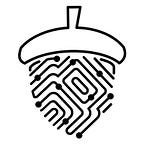How we can explain numbers to those who can’t understand them
Bandar (Team Calculi)
Every team came into this event with one goal in mind: help make this world a better place. Everyone on this planet has had this vision at some point, but it’s those who truly want to change the world who actually take action. This event was a collection of the greatest, most ambitious young minds gathered to tackle this dream and turn it into a reality.
However with goals so ambitious and with only a few weeks in hand, we couldn’t change the whole world for the greater good, but only make a start. Our team spent at least 40 hours stretched over 5 days deciding what exactly we should tackle. We bounced ideas between each other, but all agreed that we didn’t think it was a good idea. On day 5, we stumbled on the UN page os the Sustainable Development Goals and noticed an interesting point under SDG 4 (quality education):
“Build and upgrade education facilities that are child, disability and gender sensitive and provide safe, non-violent, inclusive and effective learning environments for all”
That’s when it hit us: “disability”. The school I used to go to had many students with both physical and learning disabilities and I knew what it was like for them. After further research, a common (yet unspoken) disability that came up frequently was dyscalculia, the sister of dyslexia. We knew we had to work on this problem as there were almost no products available to help those with dyscalculia and it was an issue that has taken over ~5% of the world. This was the biggest challenge we faced as a team as it took so long to get off the ground with this project, but it was worth it as we realized how important our problem was. We decided to focus on a certain age group though (ranging from 5–12, primary students), as we realized that if students can learn young how to cope with their disabilities, it wouldn’t affect them so much later in life
How can someone “solve” this problem? I mean, no one born with dyscalculia can be cured from it. After speaking to various people with dyscalculia, they told us how they feel everyday and what it’s like dealing with numbers. However, they also mentioned a few ways they work around these issues. Some said drawing dots made counting easier, others said graphical representations. This was really important information as we realized we can use this to help us help these people suffering from dyscalculia.
After ideating with our mentors for a day, we came up with a solid idea that came into 2 parts: the camera and the questions. For the camera, the users were able to take a picture of any numbers they encountered in real life and the app would show them different ways to visualize their numbers. For the questions, the user would be asked different questions from different topics in maths (such as adding numbers, comparing number sizes, other difficulties experienced by children with dyscalculia aged 5–12) and an AI would pick questions in their weakest topic and demonstrate different ways to tackle these problems.
It was the last 4 days when we started coding. I was in charge of making the camera feature and my teammate created the quiz feature. Although we tried our best to include as much as possible, it was only a prototype and wasn’t highly accurate and didn’t include many features. Our mentors helped us a lot when we came across design issues or difficulties in our technology, however we managed to create a minimum viable product in those 4 days.
Now of course with AI there comes ethics. For our idea, we had to consider the accuracy of the camera AI and the number detection. If the AI isn’t sure what a number is, for example the number 1 and 7 look similar in some fonts, the AI could give the wrong number and cause confusion. This might lead to mispaid bills or taxes which is a criminal offense. To mitigate this when we create a selling product, we should train our AI on different font types, font sizes, but also in different languages to account for the different numeral systems used by all languages.
We also have plans on how to improve our product. For example, we noticed when interviewing those with dyscalculia that a major issue was not being able to read time from an analog clock. What our app can do is convert analog time (by taking a picture of the clock) and converting it to something more understandable, such as describing the time of the day (lunch time, sunset, etc.).
Overall, this hackathon really showed us that we can do anything that we put our minds to. Although we only had 3 weeks on our hands, we managed to accomplish so much as teenagers. Now imagine what we would be able to do 5 years later when we are wiser, more experienced adults with 3 months on our hands.
